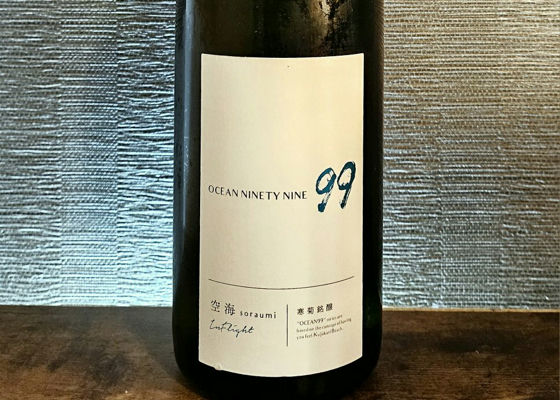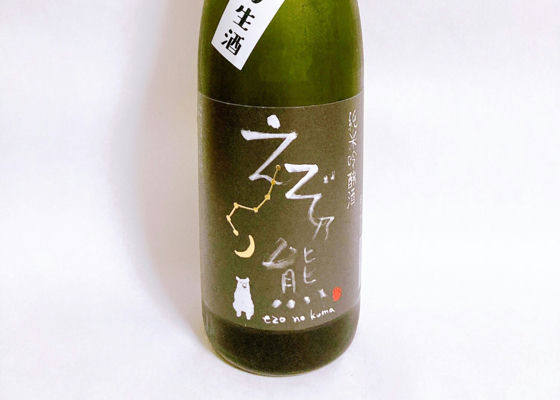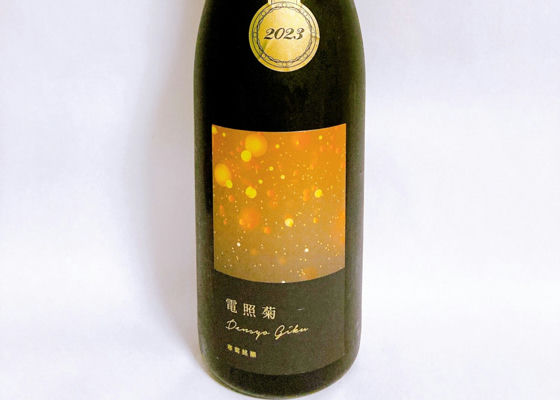Timeline
N.E@Home Drinking
I brought another bottle of Pray for Aizan 40!
The Aizan I've had in the past is 50Red Diamond, so I'm looking forward to it 😆.
This one was released at the end of the year, so many people uploaded their pictures at the beginning of the year⁉
So, is there any good fortune in leftovers?
I thought it would be easier to understand the difference since I can compare it with the previous Kukai 🤔...
I can't tell much😅lololololol
Of course, I could feel the strength and depth of the umami, and I got the impression of "Aizan~", but both are easy to drink, and both are "good here" and "good there" 🤭.
But I think this one is more elegant & richer, and you will be immersed in the aftertaste ☝.
I think this one will be more elegant & richer in the aftertaste ☝, just a bit more expensive. 
N.E@Home Drinking
I haven't drank Kangiku lately 🤔.
I've found it on the menu at a restaurant and ordered it, but I always get a cheerful response of "It just became available a few minutes ago 😄♬" 😭 lol
It's so popular after all 😁.
Then I couldn't stand it any longer and thought "Let's go buy some chrysanthemum 👊".
I decided to go to a liquor store 🏃💨, which is a 5-minute walk away.
And I took home this one (^^)v
The image is the sky and the sea of Kujukuri-hama beach⁉
I had drunk it last year, so my mind was full of preconceptions🤣.
It has a nice, easy-to-understand sweetness in the mouth, a refreshing feeling, and a slightly bitter acidity 👌 definitely delicious!
But I also have the impression that it's not very fizzy for a mouthful 🤔.
I think this is how it was 🙄. ひなはなママHi N.E. 😃
Nice liquor store, 5 minutes walk away, with a lineup of kangiku 🚗 ❣️ I use the highway 🚗 for my favorite kangiku 😅 less fizzy... 🧐I guess it's not time for my family to come in yet 🩵. N.EGood evening, HinaHanaMama!
We have chrysanthemum there...
Because it's right next to Chiba Prefecture🤣.
You did a great job of getting it by using the highway~👍️
I know you are a big fan of chrysanthemum 🤗.
I just tried it for the second day and for some reason it seems to be more fizzy 🤔. LOL.... shitakkeIf I were to compare it to baseball, it would be a sake that has three perfect runs, offense, and defense! It has a strong image of the KAIFUDO I drank in the past, and I thought it would be acidic and sharp, but thanks to the light nigori, it has an image of umami on top of the acidity. I think it is a sake that does not choose just anyone. It should go well with dishes with strong flavors and seafood, which is the concept of this sake. The umami flavor on its own will allow you to drink it without getting tired of it! My favorite type of handsome man shitakkeYamahai, a well-balanced blend of deliciousness and cleanness! This is very drinkable. É It has a sense of fullness, with a hint of sweetness and acidity. The higher the temperature, the more flavorful it becomes and the more you drink. N.E.
I remember drinking Eiko-Fuji, but there was no log, so this is my first post!
The pink label looks cute and spring-like 🩷.
I'm not sure if it's a good idea to have a bottle of this wine, but I have the impression that the core is stronger than I thought it would be, accented with umami and a light astringency 🤔.
Overall, the taste is somewhere between Classic and Modern⁉
I think this is a good choice for everyone. N.E.
Matsuo Boast" is distributed only in Chiba Prefecture.
This is a freshly squeezed, unfiltered, unpasteurized sake that is only available in limited quantities until February.
The taste is not too gorgeous like a standard sake, and the non-habitual drinking comfort is perfect for a mealtime drink⁉.
It is a bottle filled with the sake brewer's love for his hometown. 👍️ ジェイ&ノビィGood evening, N.E. 😃.
This is Matsuo Boast! I got it the other day at a liquor store in Chiba and it's waiting in our fridge 🤗.
I'm looking forward to drinking it 😋. N.EGood evening, Jay & Nobby 😆.
At first I thought it looks austere 🤔, but then I was touched by the spirit that it was brewed as a sake that the locals (Matsuo Town) can be proud of 🥹.
I think you can enjoy a different Kangiku 😋. shitakkeIt has a clear and beautiful sake quality! It has a mild yet refreshing sweetness and acidity, and seems to have a ♩ minerality. While the aftertaste leaves a flavor, the sharpness, or rather the light acidity, refreshes the palate. It is not flashy, but it is a solid and reliable sake that goes well with a variety of dishes! shitakkeA full-bodied, sweet Junmai Daiginjo. When it is poured into the mouth, it is full of gorgeousness! The acidity can also be felt, perhaps softening the heaviness of the wine. The lingering finish is long and leaves a delicious taste in the mouth. There is also a sense of minerality. Yamada-Nishiki from Okayama Prefecture is used. shitakkeIt is crisp and sweet! The acidity gives it a lightness, while the deep sweetness typical of Yamadanishiki is also present. The acidity creates a lightness, while the deep sweetness typical of Yamadanishiki is also present. The fact that it is not overly sweet and has a Tedorigawa feel to it is a masterpiece. It is a perfect balance that does not bore me and has become one of my favorite bottles. shitakkeA mellow sweet sake future. It was fresh from the first sip. I thought the sweetness was moderately heavy as a bitter adult taste that could be compared to chocolate ⁉︎ taste, but it might be a little bit too much for my stomach. As the temperature rose, the bitterness was reduced, and I thought it was rich and sweet. Still, there was no dullness! I wonder if the slight acidity reduces the dullness. shitakkeDry with a refreshingly cool mouthfeel. While firmly dry, the aftertaste surprisingly leaves a junmai (pure rice) sake-like flavor. It also has a bitter aftertaste. It is not the type of sake that can be cut off quickly. I think this sake is very versatile as a food sake. I have a feeling that it will take on a different appearance when it is laid down to rest. shitakkeIt seems to be deep and sweet, but also has a Kangiku character. It is a refreshing sake with a chirpy, effervescent taste. Immediately after taking a sip, the sweetness is rich and complex. The image is a little heavy. In the aftertaste, you can feel a strong acidity.
This sake is brewed only once a year. So-no-Mai" is a sake brewing rice grown in Chiba Prefecture, which was requested by a brewer in Chiba. This bottle has a milling ratio of 29%, which may be the first time it has been polished to this degree. Even so, my impression was that it tasted more robust than clean. 四季咲楓嶌黄 純米吟醸 無濾過生原酒 露葉風純米吟醸原酒生酒無濾過 shitakkeWhen the temperature rises a bit, the buds blossom! When it was too cold, I thought it was alcoholic and didn't seem to have any flavor on it. However, that did not seem to be the case as it should have been. I guess it is a slightly sweet-leaning sake with a touch of acidity and sharpness. The aftertaste is a bit bitter. Unlike my initial impression, I found it quite drinkable.
The sake is made from "Rohafu," rice suitable for sake brewing, which is grown only in Nara Prefecture. This rice is also used for Nara's sake, Kaze no Mori and Mimuro Sugi. Apparently, the cultivation of this rice was once discontinued, but the Choryu Sake Brewery, which brews this sake, has worked to revive it! Fusano KankikuOCEAN NINETY NINE 白銀海-Snow Sea- にごり無濾過生原酒純米大吟醸原酒生酒無濾過にごり酒 shitakkeKotto Anmai ♩ It has a fresh but rich sweet taste! It also has a chili flavor, and when mixed with Ori, the balance is excellent. Will it be an active nigori? The aftertaste is surprisingly mild. The alcohol content is low at 13 degrees. The rice used is 100% Gohyakumangoku. Recommended for those who like sweet sake. The label is simple and cool! shitakkeFresh, sweet-sour and thick sake É It has a taste reminiscent of pineapple with an acidity that stimulates the tongue, which is typical of Sono Kangiku. It is very sparkling, and even if you drink it by itself, it will make your cup of sake go further! The aftertaste is full and leaves a delicious taste on the tongue! 
shitakkeA sweet sake brewed in Hokkaido. The mouthfeel gives a sense of density, but the lingering aftertaste is surprisingly short and clean. It may be thanks to the light acidity. The sake has a Sake meter of -2 and an alcohol content of 16-17 degrees Celsius. The rice used is 100% Kitashizuku grown in Hokkaido. It has the image of a young sake, and I have a feeling that more flavor will come from it. I think this has high potential. ⁉︎
To be honest, there are sake from Hokkaido, but I had wondered if there was any sake worth mentioning. After drinking this, I have a feeling that in the future there will be sake from Hokkaido that will be nationally recognized.
It is a complete label purchase, but I think I hit the jackpot. The real-life bear has caused real damage, but the character bear on the label looks harmless and cute. The Big Dipper is also decorated on the label, and the loose, relaxed label is also nice.
After a day, it has a crisp but mild flavor! shitakkeIt is a full-bodied, yet surprisingly refreshing autumn sake⁉︎ It is a sake made using the raw yeast method and has a lot of acidity. The rice used is Yamadanishiki, but the sweetness is very restrained. It is rather bitter. I felt that the higher the temperature, the more directly the flavor could be felt. I have a feeling that the flavor will be more pronounced if it is allowed to sit for a few days. According to the back of the label, it is recommended to be heated up to 50 degrees. shitakkeThis sake tastes like sweet and sour berries. I thought it had a strong flavor, though it was not very acidic or rich. The aftertaste is slightly bitter or rich. It has a clean feeling. The slightly chili mouthfeel is also typical of Sono Kangiku. I haven't tried it, but I have a feeling it would go well with sweets.
Sono Kangiku has different types of sake with different tastes. The one I had before reminded me of citrus and pear. The rice used is Tsurugi Aiyama, produced by farmers in Mima and Awa cities in Tokushima. The "sword" comes from Tokushima Prefecture's Mount Kenzan. It seems to be a rare rice. shitakkeFrom a flashy sweetness to a light sourness! Maybe that's why the strawberry-ness came to mind a bit. Probably not at all lol. The taste is rich and lingers on. It has been a while since I drank a distinctly sweet sake, but this kind of sweet sake is also delicious. Eiko-Fuji is quick-tempered(?), and Nanasei seems to be a summer sake. This is the first summer sake "STARS"!
I have the impression that as the temperature rises a little, the full-bodied flavor becomes stronger. The heaviness may come out a little. shitakkeReminiscent of fresh pear! Gassy and light on the palate. It is refreshing, but it does not end there. It has a delicious aftertaste with a hint of umami. It is last year's "Autumn Sake," but even after half a year, it still has the same brilliance as the label! In fact, it may even be more brilliant. RecommendedContentsSectionView.title




















